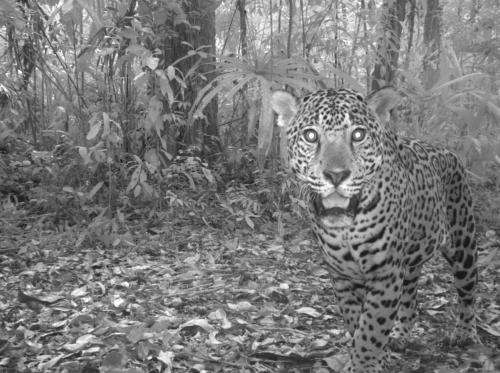Guatemala's jaguars: Capturing phantoms in photos

The Wildlife Conservation Society today released this photograph of a male jaguar taken by a remote camera trap in Guatemala's Maya Biosphere Reserve. Activated by motion or heat differentials, camera traps "capture" pictures of secretive and elusive animals in the wild. Because each jaguar's pattern of spots is unique, the photographs can be used to identify individuals and estimate abundance.
Integrating experience from more than 80 jaguar surveys, WCS has issued an updated version of its 2004 manual of methods to estimate jaguar population density using camera traps. The new manual – available in Spanish and English at: http://www.wcsguatemala.org/en-us/wildlife/jaguar.aspx.– shares lessons learned and recommendations for design and analysis that can improve density estimates.
Because jaguars roam widely seeking prey, the manual notes that density estimates require huge sample areas. In keeping with that recommendation, WCS is leading a survey in Guatemala using 50 stations of paired camera traps to cover a 500-square kilometer area of community-managed forest to learn more about these elusive creatures, including how many exist in the region.
"By protecting jaguar populations in globally significant, strategically located strongholds, our program contributes to range wide conservation of this species," said WCS Jaguar Coordinator Dr. John Polisar. "The jaguar in this photo is secure because its home is defended against illegal encroachments that would clear its forest habitat, and uncontrolled hunting that would reduce its prey. The intent of the new manual is to share the knowledge we have gained, and it provides guidance on design and analysis for a next generation of jaguar population studies that are essential to informing conservation actions."
Provided by Wildlife Conservation Society





















